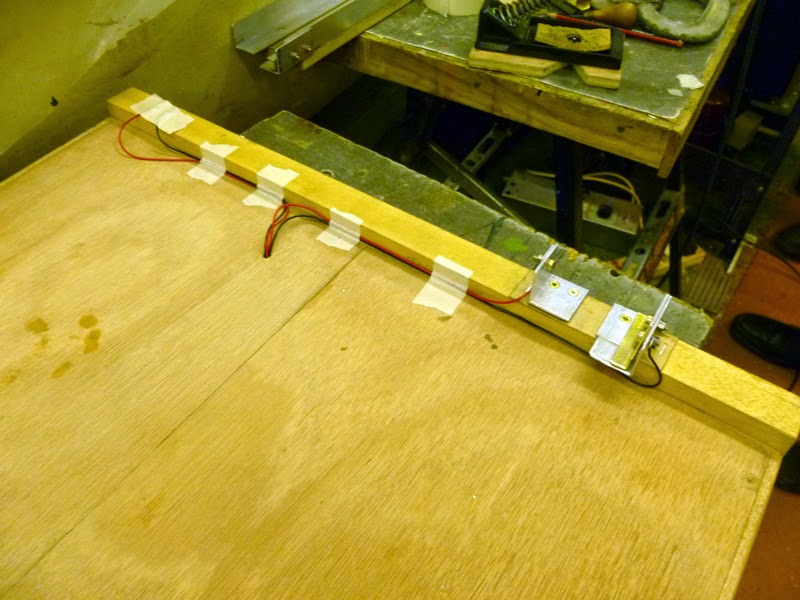Worklist:
Make the cassette interface for the mine line.
Repair failed track joints.
Remove items for the new bridge.
Modify the mine adit for larger stock.
Fit the last magnet.
A very satisfying work session, which meant everyone was busy.
Stephen cut and prepared all of the sections of angle to make the cassette 'plug' for the mine line. This is a line which disappears through a very small archway, and was originally just a short siding within the fibreglass hillside. It did, however, run right to the board edge, which made it suitable for extending into the fiddleyard.
Thinking that the mine siding had no underlay, a section of glass fibre hill was removed in order to relay the track to get the correct height for the cassette interface. We were wrong! However, with a gaping hole staring at us, thoughts turned to the proposed bridge and soon, a slight change of plan emerged, whereby after crossing the main rail, the bridge would continue to rise to the back of the board, higher than before, which would make more room for attending derailed stock underneath.
Laurence was given the job of removing the van from the end of the old siding - the location of the new bridge. The van was repaired and set-aside ready to be refitted where the old bridge was (See above).
Geoff started the first of two jobs - repairing several rail joints that had come apart, and were only found when testing the first cassette. This became a rail-alignment job, when the cassette feed (exactly 16.5mm gauge) showed up some less than accurate trackwork at the board edge. After a lot of grumbling and a lot of soldering, the repairs were finished.
Geoff then turned to fitting the final magnet, which required all three pairs of hands - two pairs to hold the board, while Geoff carved away at the underside. Did I mention the small problem? The magnet had to go directly under a stiffener down the centre of the board. Two cuts with a Japanese pull-saw and a 'tap' with a hammer, and it was gone. Carving the hole for the magnet took a little longer, but that was finally installed and tested.
Finally, a new timber brace was glued along-side the hole in the board stiffener.
Whilst testing the magnet with a few vans, the adjacent mine adit loomed ....... small. It really was a small hole, only suitable for mine equipment, of which we had one or two items. After a brief discussion (we're very Democratic), we confirmed our previous belief that a slight adjustment to the adit size would free the siding up for a greater variety of stock. Out came the saw to whittle away, then a chisel, then a hammer, then a hacksaw blade, then some pliers and wire snips - a John job - multiple layers of wood, thick ply and lots of nails). Eventually, the hole was bigger and the vans fitted nicely, but with virtually no clearance under a dip in the fibreglass hill. We decided that the small depression would have to go, especially as the scenery over was going to be made higher in the corner anyway.
The new magnet sits under the bare spot beside the vans, where the old surface magnet was located, serving the short siding. These holes will be filled with sleepers and ballast.
As the opening still isn't suitable for all of the stock we run, Geoff proposed a loading gauge. However, the correct location for the gauge (apparently) is down, beyond the point. As the point also serves the siding, where normal sized stock can go, the loading gauge will have to be able to swivel out of the way for such items. An interesting project in its own right.

















